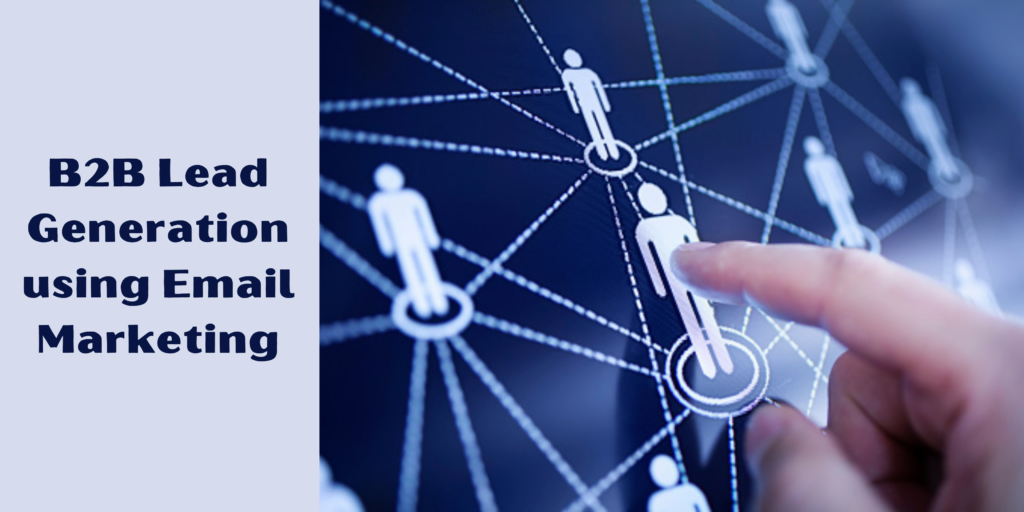
Do people generally see email as the most appealing marketing approach? At first look, perhaps not. The word “email” brings up ideas of business inboxes and stale coffee on a Monday morning. As a result, B2B marketers may be inclined to devote greater resources to alternative means of communication. However, email marketing or email lead generation is still popular for a reason. As a professional services company, it is one of the most powerful tools and also acts as a digital marketing tool, you have for meeting your audience where they spend a lot of time.
What is B2B Lead Generation?
A lead is a person who expresses an interest in your company’s services or products and is considering making a purchase. The process of recruiting potential clients and converting them into someone who is interested in your organization or product is known as lead generation. As new prospects enter the sales funnel, lead generation is critical for growth.
The “B2B” in B2B lead generation stands for “business-to-business.” When we talk about B2B lead generation, it essentially means the lead generation focused on leads from other businesses, whether profit or non-profit ones.
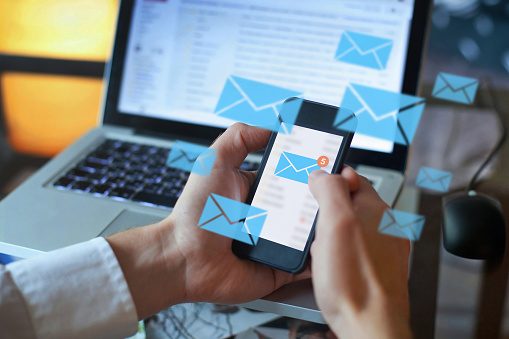
Email marketing to B2B companies has many advantages, which include ease of deployment and cost-effectiveness. But, to convert a cold list of contacts into opt-in leads, the campaign must first reach the inbox, thereby providing the reader with particular and actionable value.
The following are the four different B2B markets:
- Producers – A producer is a company that buys things from other businesses and then changes them into new products. The producers market can be linked to all food chains, automobile manufacturers, and various other sectors.
- Resellers – As the name implies, this market is only for people who buy things to resale them as is. So stores like Tesco and Sainsbury’s can be classified as part of this market because they collect a large number of products from various sources and sell them without any changes or modifications.
- Institutions – These are typically non-profit organizations like religious organizations or charities. These bodies purchase items and services in bulk quantities.
- Government – The Business to Government market is referred to as B2G. They are the biggest purchasers in the world. From paper to jet planes, they buy anything that is required for the mass.
The difference between B2B and B2C is that B2C companies’ primary aim is to sell goods and services to customers. A customer is defined as someone who is not linked with a business or brand. B2B clients are generally more concerned with conserving money because their primary goal is to create money, but B2C consumers are more willing to spend large sums of money.
Another significant distinction between the B2C and B2B sectors is that product presentation is a more essential purchase criteria in the B2C market. On the other hand, before presenting a product or packaging, most B2B organizations would consider the price and functionality of the product or service. B2B sources get leads primarily from SEO, email marketing, and social media whereas, B2C employs traditional mediums like TV advertising, banners, social media, etc.
How does B2B Lead Generation work?
A lead is not only a potential client, therefore generating a lead is the first and most significant step towards a successful purchase. All you have to do is capture their attention, offer value, and convince them that your service will solve their problem.
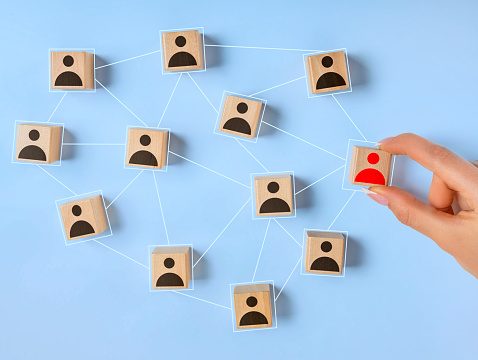
A successful B2B marketing strategy focuses on generating a strong base of leads and developing a solid pipeline to help you sustain a stable growth rate. There are four basic steps to B2B Lead Generation, referred to as a ‘B2B sales funnel,’ and it works as follows:
1. Locate the Leads
Finding the contact information for potential prospects is the first step in B2B lead creation. This information is gathered either in-house or by a third-party lead generation company.
2. Contact the Leads
Now that you have a database of high-quality leads to contact, it’s time to start cold-contacting them. This can be in the form of an email or a social media post. The goal here is to get your business or product noticed by people who are most likely going to be interested in your product or service.
3. Searching and Qualifying Leads
After generating leads, you have to figure out if that lead can be qualified as a sales prospect, which takes effort, research, and often direct contact with prospects. Are they on the verge of making a purchase? There are various contributing factors that many B2B clients may consider before making a purchase.
4. Awareness stage
B2B customers at the Awareness stage are looking for answers. To address their challenge, they require resources, education, data, opinions, and insight. Whether the lead will pursue a solution from your organization or not is determined in this stage. They may become interested in your products and services if you give them enough high-level information and content.

5. Interest/Consideration stage
The goal of nurturing the lead at this phase is to improve the buyer’s opinion of your company. They are aware of the particular service/product needed, so they’ll detail out their requirements to the sellers. It’s now time to focus on explaining how your solution is the best fit for their requirements.
6. Decision
After filtering through vendors that best suit their demands, the buyer will have meetings and check-ins with other decision-makers to complete a purchase. If your consumer is convinced that your product will suit her needs, you can close the deal by agreeing to the terms of the sale and
7. Seal the Deal
Victory! After several meetings and comparisons with different sellers, the lead picks you among the rest and purchases your service/product.
Strategies for B2B Lead Generation: Best Practices
So, now that we’re clear with the definitions let’s talk about how to implement a specific B2B email marketing lead generation strategy. Many B2B companies recognize the value of email marketing for lead generation but often lack the ability to execute it effectively. Some common strategies to launch an email marketing campaign or lead generation campaign are listed below.
1. Build a List
The distribution lists you build around a B2B email marketing strategy are what gives it its power. These email address lists should be formulated with care, and they should be curated and classified appropriately so that when it’s time to email your target audience, you’re sending the right message. This way you don’t have to test your email.
Many businesses compile lists based on new and existing customers. Others make lists based on some other factors. Eventually, the lists you create will be tailored to your company or industry, and they will be tailored to hit a specific goal.
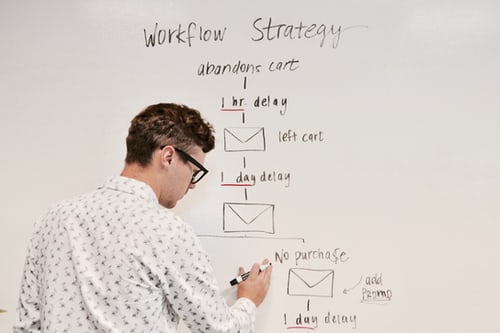
2. Segment your email
This email marketing technique allows you to send a customized invitation or message to specific email users for which you can use email automation. Every email you send will not be relevant to everyone on your mailing list. Your subscribers could be at various phases of the buying process or looking for other solutions.
For example, your newest leads may want to read more and educate themselves about your business and products. In contrast, the older leads may look at how your brand can make their lives easier and other detailed information.
This is where email list segmentation could help. Segmentation not only improves your relationship with your audience but also provides your emails with a personal touch. Consumers will always choose quality over quantity when it comes to email.
3. Craft Perfect Subject Lines
If you’re like the majority who first looks at the subject and sender line while checking your email, then you know it’s because you want to focus on the most essential issues first. Research shows that 64% of email users open their mails judging from subject lines alone. Unless you catch your audiences’ attention with an enticing subject liner, it’s quite possible that your email might end up in spam box.
The effectiveness of your subject lines will make or break you. A subject line should be effectively 28-50 characters. A strong subject line should build curiosity and tap into the buying intent of your audience. However, make sure you do not use click-bait subject lines.
4. Set your Timing Right
While getting recipients to open your B2B email marketing content is not exactly rocket science, sending it at the proper time can be of great help. While the ideal times for each audience and organization are different, the data from your analytics can assist you to get the knowledge you need to figure out when the best time is to send your email.
The ideal time to send an email is right before your customers’ emails are most likely to be opened. This is usually 10 a.m. for business customers, as the 10 a.m. slot comes right after they’ve dealt with the essential emails at the office. Another such slot is 1 p.m. after lunch and 4 p.m. Pay attention to client habits by checking open times, as always.
5. Use Simple Designs
Over 80% of email users check their inboxes on their phones, and emails that don’t display properly on mobile devices are frequently discarded in under three seconds. Make sure your email doesn’t end up in the trash.
The ideal B2B emails are always the most basic in design. Use no more than two fonts at a time, leave plenty of white space, and include photos if feasible. The majority of people skim the content, making it easier for them to assimilate the information. Hence, make sure to come up with valuable content.

6. Include a compelling Call-to-Action
Your B2B email marketing content is a waste if you do not include a persuasive Call-to-Action in it. After all, those who sign up for your emails are already interested in your business.
This showcases the necessity of delivering information to B2B customers. Business buying is more information-driven than emotional, especially when it comes to significant purchases. Prove that your product or service is the greatest option for them.
However, refrain from adding more than one CTA which can leave your recipient confused and asking’ “Which CTA should I even click on?”, and eventually end up clicking nothing. On the other hand, if you only have one CTA for each email, your audience will be able to focus on your email content and ultimately proceed with one action.
7. Providing Educational Information
Consumers and corporations alike prefer to be well informed when making large purchases like fixed assets, etc. Not only must these meet the essential criteria, but they must also be of good quality and provide excellent customer service. Before purchasing something, many corporate consumers may want to learn more about the firm and its reputation.
Therefore, keeping adequate information in the email about the product or the problem it solves will intrigue your B2B recipient to delve deeper into it while holding their attention. According to a study conducted by a B2B email marketing agency, call to action link text featuring “more info” performed 90 percent better than CTA text having “buy now.”
8. Re-Engage with Your Subscribers
Anyone doing B2B email marketing must ensure that no one falls through the gaps. While many people are fast to sign up for emails, they do not always read everything that is sent to them. You’ll need to re-engage your subscribers to tackle this issue. You can do this in a variety of ways, including sending a few manual emails. Consumer surveys, as well as the “we haven’t seen you in a while” email, are two more options.
Another way of keeping an active engagement is a two-way discussion; that way, you’ll have a better chance of turning prospects into leads. Your CTA might be about providing feedback on your email or anything else they’d like to improve. You trust the gain of your recipient by showing that there is a person behind these emails by opening the lines of connection.

9. Authenticate your domain
If your email ends up in the spam folder, it will significantly reduce the amount of email opens, which will impact the number of clicks back to your website. Authenticating your domain is one technique to enhance your open and delivery rates.
10. Get Automated
Marketing automation has emerged as a cornerstone to increasing business revenue for B2B marketers.
An ESP (Email Service Provider) should include automation features that allow you to engage with potential and existing customers promptly. Using an autoresponder to contact someone who has filled out a form or downloaded content from your website is an excellent example of automation.
In B2B email marketing, automation can be a wonderful approach to acknowledge a customer’s or prospect’s action and lessen the likelihood of them feeling confused, uncertain, or frustrated.
11. Nurture Leads
A successful lead nurturing program concentrates marketing and communication efforts on listening to prospects’ requirements and delivering the information and answers they require to create trust, raise brand awareness, and maintain a connection until the prospects are ready to buy.
Creating a Lead Nurture campaign is sending a series of emails over a period of time that are specifically meant to pique the attention of those who are contemplating your company. To include the overall quantity of communications your leads receive, including newsletters, product updates, and database emails, effective lead nurturing must span your entire marketing calendar.
The most effective tried-and-tested B2B email marketing strategy
1. Select the Right ESP
An Email Service Provider (ESP) is a company that provides an email marketing platform or tool to assist you in sending email marketing messages. Many businesses provide self-service email software. That is, you can create and send emails, newsletters, and email campaigns without the assistance of others.
Additional features of a more advanced email service provider include:
- Emails with dynamic content
- Automated email and marketing
- Forms for capturing leads
- A/B testing of subject lines and content in emails
- Tracking of visitors to a website to gather additional information about subscribers
- A/B testing of full automation
- Subscriber segmentation based on their interests
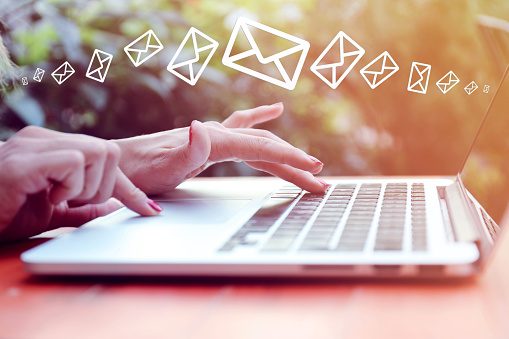
Some of the most popular ESPs in the market today are:
- MailChimp– Mailchimp is one of the most well-known email marketing services. Mailchimp is primarily utilized by small and mid-sized email marketing senders who do not have high expectations of their email marketing provider. This dedicated email marketing platform is mobile-friendly, enables for automation and customization, and includes extensive analytics. You can send up to 12,000 emails every month for free if you have fewer than 2,000 subscribers. The cost of upgrades is determined by the number of subscribers.
- Hubspot- Hubspot is one of the marketing industry’s kingpins, and its influence isn’t only restricted to digital or B2B companies. Their enterprise email marketing works in tandem with their CRM platform, Sales, and is also compatible with Shopify-based eCommerce businesses. Hubspot’s ESP can be the appropriate tool for you if you want to round out all of your inbound marketing activities, including email marketing.HubSpot provides a variety of reports on the performance of your emails, allowing you to assess what’s engaging with your audience and adjust your strategy accordingly.
- MailGun- MailGun is used by developers all around the world for email development and delivery. High-volume senders will have a frictionless time and a team of developers to help them, thanks to the API-first design. Even better, users can save particular code samples for future use in specific languages and frameworks.
- Constant Contact- A proponent of online business growth, Constant Contact’s email marketing tool is built around segmenting your audience and searching for a personalized message to achieve success. They have targeted and automated email capabilities that interact well with social media efforts. Constant contact may be the right ESP for you if you’re a small or mid-sized business trying to expand. Their service starts at $15/month.
- Sailthru- While Sailthru is a smaller and less well-known company than the others listed above, they are just as effective. Mobile email marketing templates and quick adjustments for audiences using a smaller screen have benefited Sailthru’s customers directly. From a full customer success team and implementation professionals to Sailthru School, a specialized training resource for their products, Sailthru is committed to making each of their clients successful.
- Emarsys- Many small firms, particularly those compelled to operate digitally, can get overburdened with a variety of activities and have little time to examine data and make informed decisions. Emarsys can assist you here. Dubbed an omnichannel customer engagement platform, Emarsys, is an ESP that allows your company to be data-driven.
2. Focus on Personalization
Personalization is the process of incorporating tokens into your content (emails, landing pages, or website pages) in order to engage your audience better and deliver a tailored experience to a known contact. This method increases audience engagement and makes them feel unique since their expertise is individualized by a firm that wants to meet their service or product needs.
According to a survey by Experian Marketing Services, tailored subject lines make it simple to increase email open rates by 29.3% across industries. For the best outcomes, whether a welcome email message or a marketing email, you’ll not only need a personalized subject line but also a personalized email.
Personalizing your B2B email marketing communications will result in greater connections with your target audience and result in more sales. People expect you to send them consistently relevant marketing messages so they can be certain they’re making the best decision possible when doing business with you.
However, there is a thin line between a genuine experience and one that is unpleasant. After all, this is a commercial connection, so you don’t want to get too personal. So while it’s fine to use someone’s name, referring to their recent activity across your website is usually overkill.
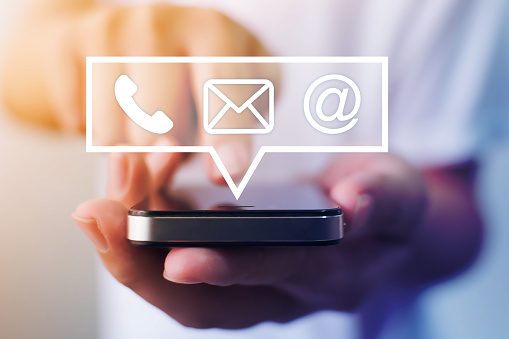
3. Set the Frequency and Time of emails
You want to send enough emails to stay on a reader’s radar, engage them, and hopefully convert them into a buyer. However, you don’t want to annoy them by sending them too many emails. So, striking the perfect balance is key.
An in-depth study from CoSchedule discovered a certain range that works best for B2B enterprises across the board: “at least one email every month, and no more than five. This study discovered that the majority of B2B email marketers send two to three emails every month.
To get the best results, find a certain date and time to send the email message. It has been observed that sending email on Tuesday is best and sending email on Friday is the worst. Many people also believe that sending on a non-working day, such as Sunday, increases open rates.
Common B2B Lead Generation Mistakes
1. Prioritizing the wrong platform
When working toward lead generation, the first platform that might come to one’s mind is Facebook or Twitter. But the issue arises when the entire approach is based around these broad generalizations.
You will need to do market research and examine your existing data to determine the key problem which is not platforms your potential leads visit, but which platforms they resort to when making purchasing decisions. Where do they conduct their research and how do they conduct it? When they’re out shopping, who do they turn to for advice?
While Facebook and other social media sites may still play a role, other platforms such as LinkedIn and industry-specific forums have far more clout than you may think.
2. Slow Follow-ups
Form completions sometimes necessitate firms taking action or following up with a user. It was acceptable 10 years ago to reply to client queries within a week. Those days, are, however, long gone. Such a long reaction time is no longer acceptable., and customers want immediate access to solutions. The most successful are those who respond within 5 minutes after obtaining a lead. As a result, today’s businesses must be more sensitive and quick to react than ever before.
To overcome this obstacle:
- Instruct your staff to follow up on any leads in a timely manner.
- Ensure that communication channels are always available and that you maintain close contact with both new and existing consumers to stay on their minds.
- Use features like triggers and tags to rapidly sort among priorities and customize actions and material for specific users.
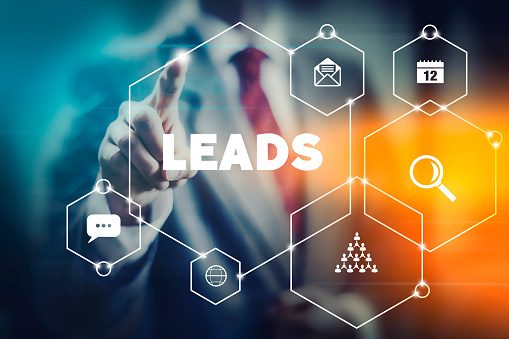
3. Ineffective CTA
One of the most important components of the entire lead generation process is your CTA. It directs and instructs your users on what to do next. If that element is lacking, however, it can deter interaction, make collecting client information more difficult, and ultimately result in poorer conversion rates. It also has the potential to drive users into the arms of your competitors.
4. Incorrect grammar
An email may be the first impression a potential lead gets of your organization and brand, especially if you’re doing cold outreach. Consider the impact this outreach email would have on a potential client or partner’s perception of your company.
Therefore it is important to have a crisp and correct knowledge of grammar before you head towards email marketing. It’s critical that you take the time to make sure properly phrase your email, additionally make it professional, and grammatically correct.
Conclusion
Whether you’re addressing individual customers or business clients, email marketing has shown to be an effective marketing approach over time. To produce B2B sales, you can rely on email marketing, and the purpose of this article was to shed some light on the most crucial actions you should check on your list before starting your campaign.

The effectiveness of email as a quantitative and cost-effective marketing channel is undeniable. Email has a significant value for organizations in terms of generating sales leads and money, as well as maintaining clients, according to both professional opinion and industry figures.
The key to converting first-time website users into long-term business prospects is to build a relationship with them and provide value through your content. It’s a virtuous cycle to work on your B2B sales funnel or marketing plan. As a result, allow your business to flourish as a result of your experience.


